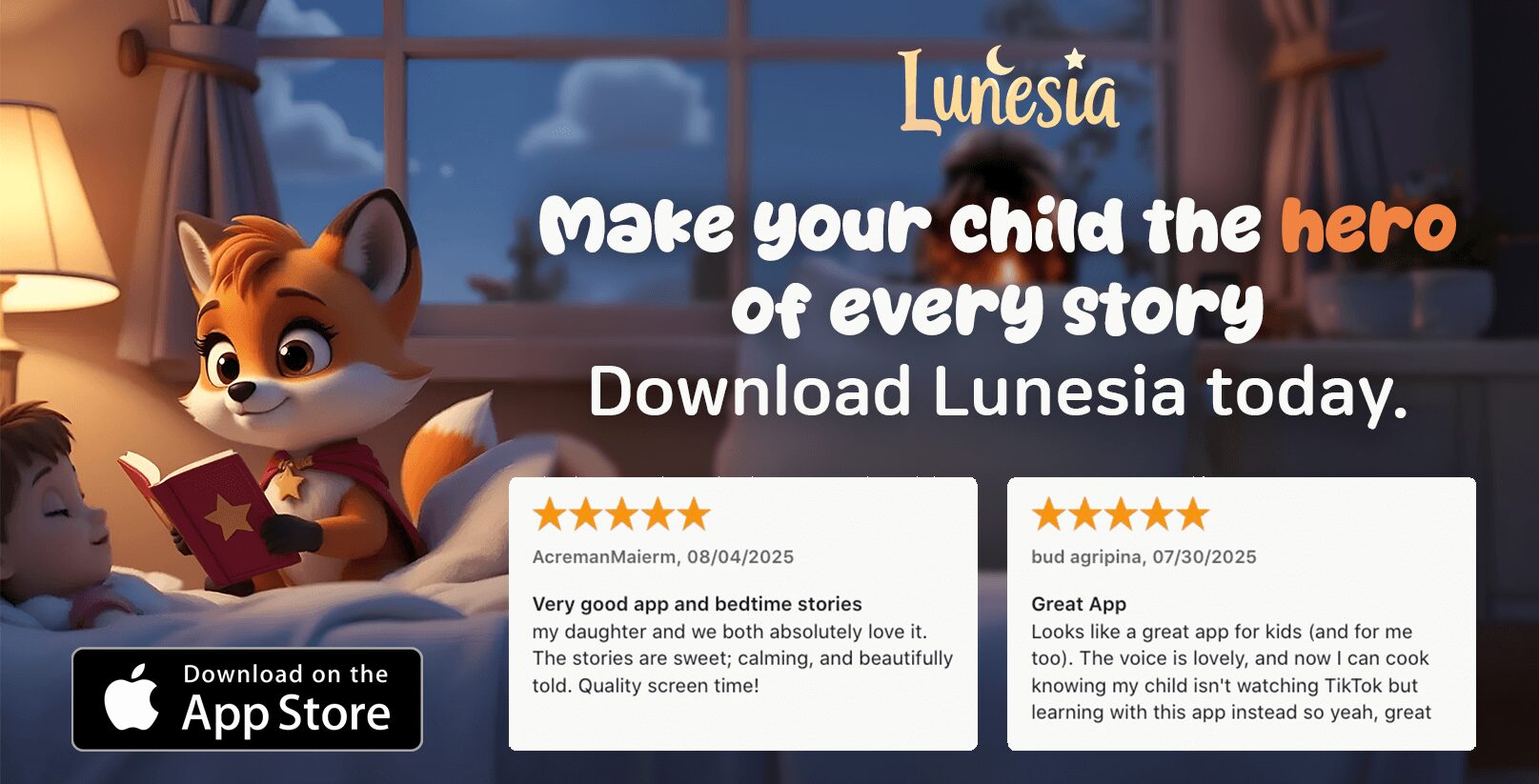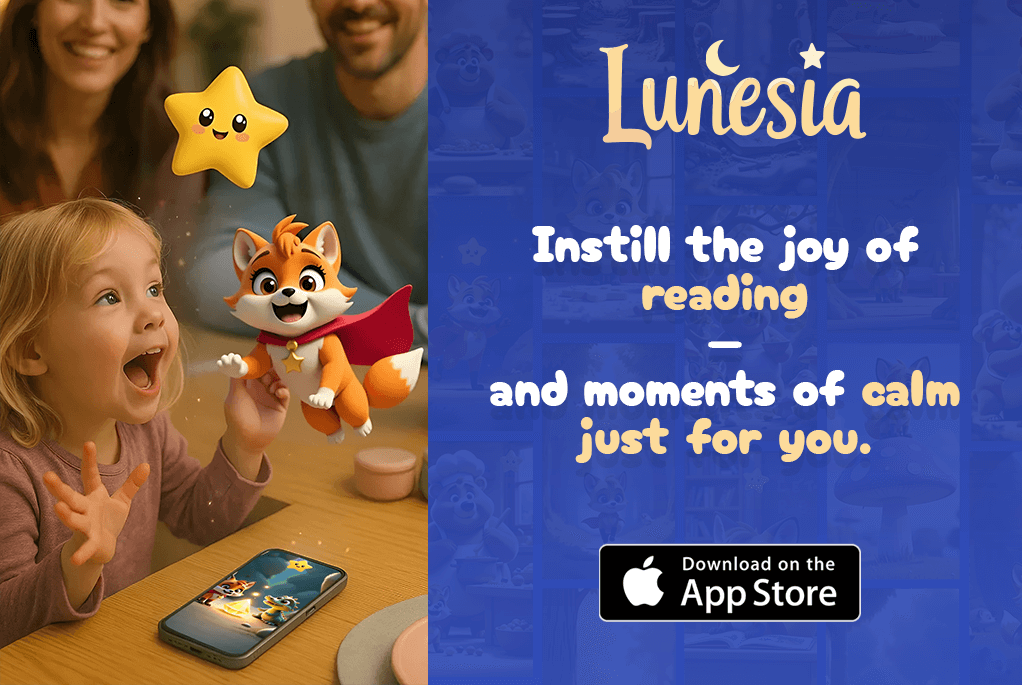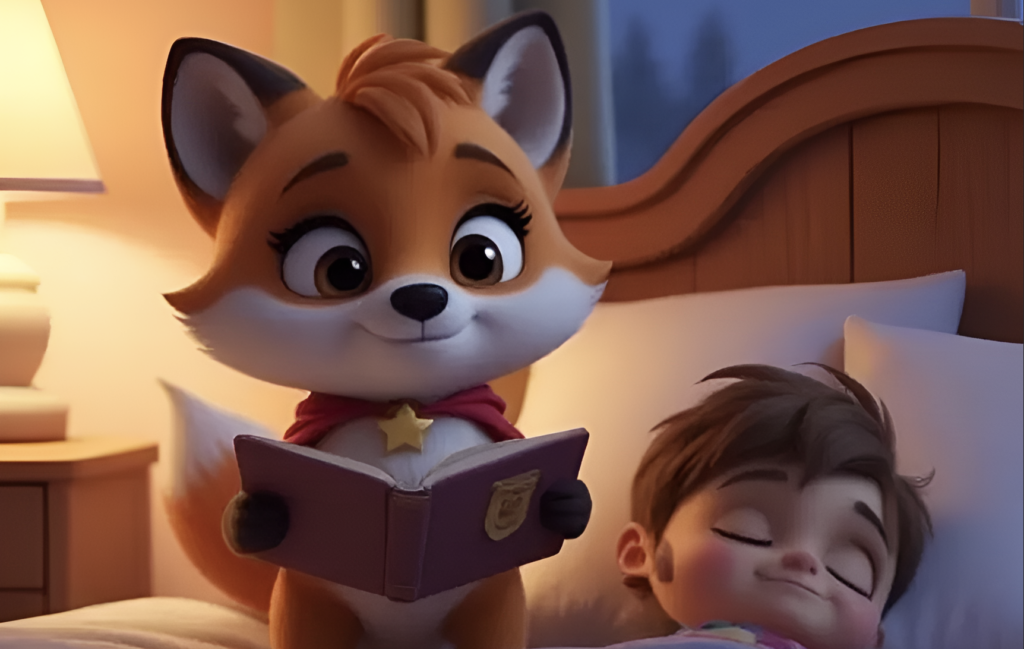Remember the magic of bedtime stories? The way characters seemed to leap off the page, sparking imagination and wonder? That magic is getting a modern upgrade. Imagine a world where your child’s favorite book characters come to life, right before their eyes. That’s the promise of augmented reality in bedtime routines.

I’ll never forget the first time I saw my child interact with an augmented reality book. Watching her eyes light up as characters moved and spoke was a moment I’ll cherish forever. It wasn’t just a book—it was an experience. And it’s changing the way young readers engage with stories.
With innovative AR-enhanced books, bedtime isn’t just about reading anymore. It’s about creating interactive adventures that captivate and educate. From improving literacy to addressing screen-time concerns, these hybrid experiences are transforming the way we think about books.
So, are AR storybooks the next big thing? Let’s explore how they’re reshaping the reading experience for kids and parents alike.
What Are AR Storybooks and How Do They Work?
What if the pages of a book could transform into a 3D world? That’s the magic of augmented reality. It blends the physical and digital, turning traditional reading into an interactive adventure. Let’s dive into how this technology works and why it’s capturing the imagination of young readers.
Understanding Augmented Reality in Storytelling
At its core, augmented reality overlays digital elements onto the real world. In storytelling, this means characters and scenes can pop out of the pages. For example, in the book “Peter O’Meter,” scanning the pages activates robot animations. This blend of print and digital creates a unique, immersive experience.
The Technology Behind AR Storybooks
AR-enhanced books rely on three key components: trigger images, an app, and 3D overlays. The trigger images are usually the book pages. When scanned by an app like QuiverVision or Eyejack, they activate animations or interactive elements. For instance, “Ocean Monsters” uses this tech to make sea creatures swim off the pages.
Brands like Carlton Books have taken this further, creating AR experiences for Disney franchises. These innovations show how augmented reality is reshaping the way we engage with stories. If you’re curious about the future of storytelling, check out this interactive storytelling guide.
Traditional books are timeless, but AR-enhanced ones add a new layer of engagement. They combine the tactile feel of print with the dynamic visuals of digital media. This hybrid approach is not just entertaining—it’s educational, sparking curiosity and creativity in young minds.
Why AR Storybooks Are Transforming the Reading Experience
The way children interact with stories is evolving, thanks to innovative technology. Gone are the days when reading was a passive activity. Today, books are becoming dynamic tools that engage, educate, and inspire. This shift is reshaping the reading experience for a new generation.

Engaging Young Readers with Interactive Elements
One of the most exciting aspects of this technology is its ability to captivate young readers. Interactive elements like animations, sound effects, and 3D visuals turn reading into an adventure. For example, in “Monsters Have Manners,” kids can join a tea party with friendly monsters, learning social skills along the way.
Research shows that these interactive features can accelerate learning. A study found that children using this technology developed social skills 68% faster than those in traditional settings. It’s proof that engagement isn’t just fun—it’s effective.
Enhancing Imagination and Learning Through AR
Beyond engagement, this technology fosters creativity and cognitive development. Spatial interactions in 3D environments, like those in “Ocean Monsters,” boost memory retention and problem-solving skills. Teachers are even adapting these tools for lessons on habitat conservation, making learning both fun and meaningful.
For parents, it’s a game-changer. If your child is reluctant to read, this approach can bridge the gap between screen time and storytime. It’s a win-win: kids get the excitement of technology, and parents get the joy of seeing their children fall in love with books.
- Classroom proof: Interactive role-play accelerates social skill acquisition by 68%.
- Cognitive benefits: 3D spatial interactions enhance memory and critical thinking.
- Parent hack: Use interactive storytime to transition screen-reluctant readers.
- Emotional development: Stories like “PETER O’Meter” teach self-regulation through relatable metaphors.
This technology isn’t just changing the way kids read—it’s enriching their life and learning in ways we’re only beginning to understand. The future of storytelling is here, and it’s more exciting than ever.
Top AR Storybooks to Ignite Your Child’s Imagination
Books are no longer just words on paper—they’re gateways to new worlds. With the help of augmented reality, stories come alive, blending the physical and digital in ways that captivate young minds. Here are three standout books that are transforming the reading experience for kids.
Monsters Have Manners: Teaching Social Skills with AR
This book uses augmented reality to teach etiquette in a fun, interactive way. Kids can join a tea party with friendly monsters, learning manners through engaging animations. The app QuiverVision brings these characters to life, making lessons memorable and enjoyable.
Free activity guides are available to extend the learning experience. Parents love how it combines entertainment with education, making it a perfect addition to bedtime routines.
Peter O’Meter: A Journey of Self-Discovery
This story follows a robot named Peter as he navigates emotions and self-regulation. The app integration allows kids to interact with Peter, making the story more relatable. Teachers have found it useful for pairing with robotics and STEM projects, adding a cross-curricular dimension.
With its focus on emotional development, this book is a great tool for parents and educators alike. It’s a wonderful way to spark conversations about feelings and self-awareness.
Ocean Monsters: Exploring Marine Life in AR
Dive into the depths of the ocean with this immersive book. Augmented reality brings sea creatures to life, showing the impacts of climate change on coral reefs. It’s a fantastic way to teach kids about marine biology and environmental conservation.
Parents can use this book to combine screen time with meaningful learning. It’s a visually stunning experience that leaves a lasting impression on young readers.
These books are more than just stories—they’re interactive adventures that inspire, educate, and entertain. If you’re looking to enhance your child’s reading experience, check out these must-read titles.
Conclusion: The Future of Bedtime Stories with AR Storybooks
The future of bedtime stories is brighter than ever, blending tradition with innovation. As a parent, I’ve seen how augmented reality can transform the reading experience, making it more interactive and engaging for young readers. From choose-your-own-adventure tech to preserving the tactile feel of physical books, this evolution is reshaping storytelling.
Industry forecasts predict a 300% growth in the AR education market by 2026, showing its potential to enrich children’s life. It’s not just about screen time—it’s about creating meaningful moments that inspire learning and creativity. Platforms like Lunesia are leading the way, offering tools that make every story interactive and impactful.
Ready to explore this new world? Start with ERB’s free trial app or check out Amazon’s AR bundle. The future of storytelling is here, and it’s waiting for you and your child to dive in.
FAQ
What exactly are augmented reality storybooks?
Augmented reality storybooks blend traditional print with digital technology. Using a smartphone or tablet, these books bring characters and scenes to life through interactive animations and sounds.
How do augmented reality storybooks work?
They work by scanning the pages of a physical book with a dedicated app. The app overlays digital content, like animations or 3D models, onto the real-world page, creating an immersive experience.
Are augmented reality storybooks suitable for all ages?
Yes! While they’re especially popular with young readers, the interactive elements can captivate older children and even adults, making them a versatile tool for learning and entertainment.
What are the benefits of using augmented reality in storytelling?
These books enhance engagement, boost imagination, and make learning more interactive. They’re a great way to combine screen time with the tactile joy of reading a physical book.
Can augmented reality storybooks replace traditional books?
Not entirely. They’re designed to complement traditional reading by adding a layer of interactivity. Both formats have unique benefits and can coexist in a child’s reading routine.
What are some popular augmented reality storybooks?
Titles like Monsters Have Manners, Peter O’Meter, and Ocean Monsters are great examples. Each offers unique themes, from social skills to marine life exploration, all brought to life with AR.
Do I need special equipment to use augmented reality storybooks?
All you need is a smartphone or tablet with a camera and the specific app for the book. No additional gadgets are required, making it easy to get started.



